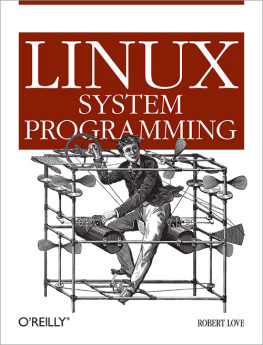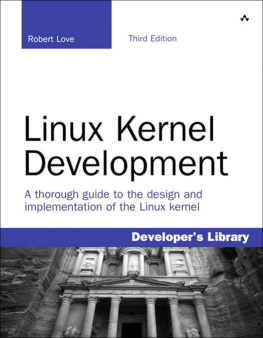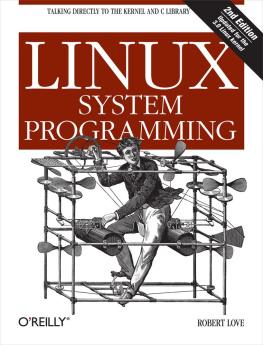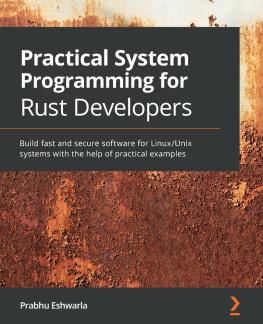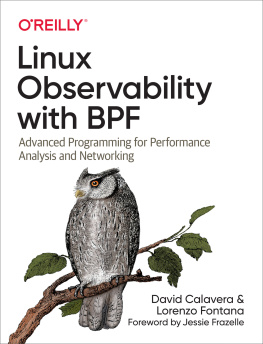Foreword
There is an old line that Linux kernel developers like to throw out when they are feeling grumpy: "User space is just a test load for the kernel."
By muttering this line, the kernel developers aim to wash their hands of all responsibility for any failure to run user-space code as well as possible. As far as they're concerned, user-space developers should just go away and fix their own code, as any problems are definitely not the kernel's fault.
To prove that it usually is not the kernel that is at fault, one leading Linux kernel developer has been giving a "Why User Space Sucks" talk to packed conference rooms for more than three years now, pointing out real examples of horrible user-space code that everyone relies on every day. Other kernel developers have created tools that show how badly user-space programs are abusing the hardware and draining the batteries of unsuspecting laptops.
But while user-space code might be just a "test load" for kernel developers to scoff at, it turns out that all of these kernel developers also depend on that user-space code every day. If it weren't present, all the kernel would be good for would be to print out alternating ABABAB patterns on the screen.
Right now, Linux is the most flexible and powerful operating system that has ever been created, running everything from the tiniest cell phones and embedded devices to more than 70 percent of the world's top 500 supercomputers. No other operating system has ever been able to scale so well and meet the challenges of all of these different hardware types and environments.
And along with the kernel, code running in user space on Linux can also operate on all of those platforms, providing the world with real applications and utilities people rely on.
In this book, Robert Love has taken on the unenviable task of teaching the reader about almost every system call on a Linux system. In so doing, he has produced a tome that will allow you to fully understand how the Linux kernel works from a user-space perspective, and also how to harness the power of this system.
The information in this book will show you how to create code that will run on all of the different Linux distributions and hardware types. It will allow you to understand how Linux works and how to take advantage of its flexibility.
In the end, this book teaches you how to write code that doesn't suck, which is the best thing of all.
Greg Kroah-Hartman
Preface
This book is about system programmingspecifically, system programming on Linux. System programming is the practice of writing system software , which is code that lives at a low level, talking directly to the kernel and core system libraries. Put another way, the topic of the book is Linux system calls and other low-level functions, such as those defined by the C library.
While many books cover system programming for Unix systems, few tackle the subject with a focus solely on Linux, and fewer still (if any) address the very latest Linux releases and advanced Linux-only interfaces. Moreover, this book benefits from a special touch: I have written a lot of code for Linux, both for the kernel and for system software built thereon. In fact, I have implemented some of the system calls and other features covered in this book. Consequently, this book carries a lot of insider knowledge, covering not just how the system interfaces should work, but how they actually work, and how you (the programmer) can use them most efficiently. This book, therefore, combines in a single work a tutorial on Linux system programming, a reference manual covering the Linux system calls, and an insider's guide to writing smarter, faster code. The text is fun and accessible, and regardless of whether you code at the system level on a daily basis, this book will teach you tricks that will enable you to write better code.
Audience and Assumptions
The following pages assume that the reader is familiar with C programming and the Linux programming environmentnot necessarily well-versed in the subjects, but at least acquainted with them. If you have not yet read any books on the C programming language, such as the classic Brian W. Kernighan and Dennis M. Ritchie work The C Programming Language (Prentice Hall; the book is familiarly known as K&R), I highly recommend you check one out. If you are not comfortable with a Unix text editorEmacs and vim being the most common and highly regardedstart playing with one. You'll also want to be familiar with the basics of using gcc , gdb , make , and so on. Plenty of other books on tools and practices for Linux programming are out there; the bibliography at the end of this book lists several useful references.
I've made few assumptions about the reader's knowledge of Unix or Linux system programming. This book will start from the ground up, beginning with the basics, and winding its way up to the most advanced interfaces and optimization tricks. Readers of all levels, I hope, will find this work worthwhile and learn something new. In the course of writing the book, I certainly did.
Nor do I make assumptions about the persuasion or motivation of the reader. Engineers wishing to program (better) at a low level are obviously targeted, but higher-level programmers looking for a stronger standing on the foundations on which they rest will also find a lot to interest them. Simply curious hackers are also welcome, for this book should satiate their hunger, too. Whatever readers want and need, this book should cast a net wide enoughas least as far as Linux system programming is concernedto satisfy them.
Regardless of your motives, above all else, have fun .
Contents of This Book
This book is broken into 10 chapters, an appendix, and a bibliography.
This chapter serves as an introduction, providing an overview of Linux, system programming, the kernel, the C library, and the C compiler. Even advanced users should visit this chaptertrust me.
This chapter introduces files, the most important abstraction in the Unix environment, and file I/O, the basis of the Linux programming mode. This chapter covers reading from and writing to files, along with other basic file I/O operations. The chapter culminates with a discussion on how the Linux kernel implements and manages files.
This chapter discusses an issue with the basic file I/O interfacesbuffer size managementand introduces buffered I/O in general, and standard I/O in particular, as solutions.
This chapter completes the I/O troika with a treatment on advanced I/O interfaces, memory mappings, and optimization techniques. The chapter is capped with a discussion on avoiding seeks, and the role of the Linux kernel's I/O scheduler.
This chapter introduces Unix's second most important abstraction, the process , and the family of system calls for basic process management, including the venerable fork .
This chapter continues the treatment with a discussion of advanced process management, including real-time processes.
This chapter discusses creating, moving, copying, deleting, and otherwise managing files and directories.
This chapter covers memory management. It begins by introducing Unix concepts of memory, such as the process address space and the page, and continues with a discussion of the interfaces for obtaining memory from and returning memory to the kernel. The chapter concludes with a treatment on advanced memory-related interfaces.

